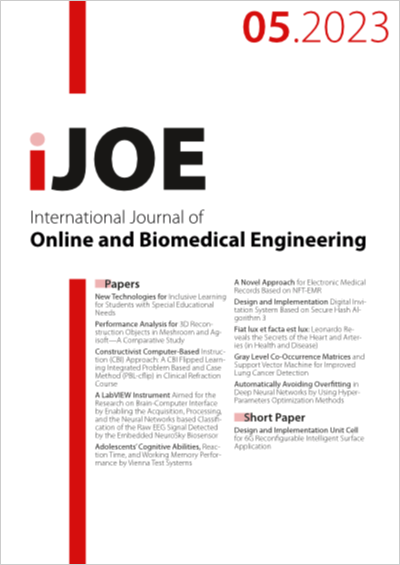Design and Implementation Unit Cell for 6G Reconfigurable Intelligent Surface Application
DOI:
https://doi.org/10.3991/ijoe.v19i05.37585Keywords:
RIS, 6G, Intelligent Surface, MIMO, CSTAbstract
This article presents a model through which the reflection coefficient amplitude as well as phase of reflective intelligent surfaces can be estimated accurately. The reconfigurability of the surface was achieved by incorporating the varactor diodes into the surface of the cell unit. The manipulation of the phase of the reflection coefficient can be achieved by making adjustments to the biasing state of the varactors. The model, which makes use of a physics-based methodology and is based on a transmission-line circuit description of the Reconfigurable Intelligent surfaces (RIS) unit cells, considers every pertinent electrical and geometrical characteristics of the proposed surface. With the method proposed in this paper, fast and accurate RIS-based communication lines can be created. The recommended accuracy of the proposed method was confirmed through the use of a CST microwave studio full-wave simulations.
Downloads
Published
How to Cite
Issue
Section
License
Copyright (c) 2023 Jaafar Qassim Kadhim, Adheed H. Sallomi

This work is licensed under a Creative Commons Attribution 4.0 International License.



